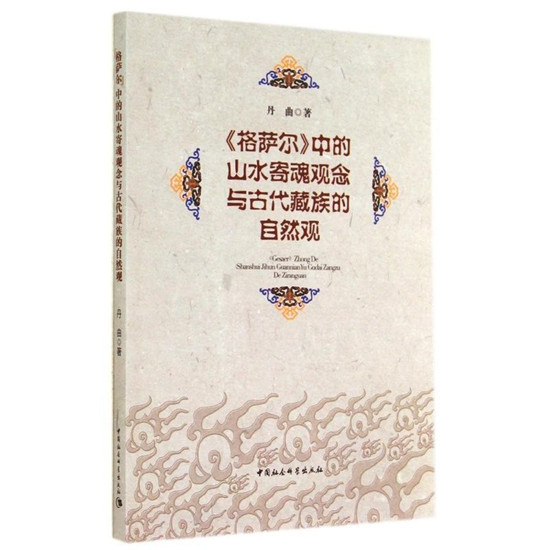Interpreting Tibetan notion of eco-civilization
Author : Guo Peng Source : Chinese Social Sciences Today 2016-02-16

Landscape Worship and Ancient Tibetan’s Outlook on Nature in Gesar
Author: Dan Qu
Publisher: China Social Sciences Press
The Tibetan epic Gesar is regarded as an encyclopedia of Tibetan culture. The intricate links between deity worship, sacred mountains and lakes reflect the connections between gods, man and nature, which form the basic foundations of the epic, known as A-myes-rMa-chen Yamagami culture.
Landscape Worship and Ancient Tibetan’s Outlook on Nature in Gesar examines beliefs surrounding Tibetan mountain deities in the epic work, while covering a range of topics, such as ancient religion, literature and philosophy in Tibet.
A-myes-rMa-chen Yamagami is worshipped as a mountain spirit and chief of all the territorial deities by the inhabitants of the traditional Tibetan province of A mdo. Its formation and evolution was accompanied with changes in Tibetan society, history, culture and religion, because it had various ties to the local culture at various different times. The “mountain spirit” culture that is derived from the worship of the A-myes-rMa-chen territorial deity is not only synchronized and relevant to all of Tibetan culture but also contains its own distinct development trajectory and characteristics.
The worship of A-myes-rMa-chen Yamagami reflects Tibetan people’s traditional ideas of ecological conservation, including production models, adaptation to nature, ecological morality and other ethical concepts in Tibetan Buddhism. It is a historical record of the interdependence of Tibetans and the environment. It is also a collection of valuable experience in ecological conservation.
The worship of Tibetan mountain deities is a complex cultural system that went through pre-historic culture, Bon religion and Buddhism. Each period has distinctive cultural patterns and characteristics.
On the basis of proving the unity of ancient Tibetan’s landscape worship and outlook on nature, the book discusses the interactive relationships between the latter and Gesar, demonstrating Tibetan people’s desires for longevity. In addition, such a united and harmonious relationship was gradually reinforced through the worship of mountain and lake gods in the prehistoric religion, Bon religion and Buddhism.
In Gesar, human beings pray and make offerings to local deities that dwell on high mountains and in water, trees, stones and some animals. Therefore, protecting the landscape and various creatures living in it means protecting human beings themselves.
Tibetan people firmly believe that there is a causal relationship between man and nature. The two can sense each other directly or indirectly. Such sensations extend to seasons, the environment, the universe and man. In a way, the idea of harmony between man and nature ties all beings together. Out of respect and interdependency, Tibetans uphold ecological safety principles and these objectively help protect the ecological environment in Tibet.
Ye Shengtao made Chinese fairy tales from a wilderness
Ye Shengtao (1894–1988) created the first collection of fairy tales in the history of Chinese children’s literature...
-
How northern ethnicities integrated into Chinese nation
2023-09-18
-
Mogao caves
2023-09-12
-
Mogao Grottoes as ‘a place of pilgrimage’
2023-09-12
-
Time-honored architectural traditions in China
2023-08-29
-
Disentangling the civilizational evolution of China
2023-08-28
-
AI ethics in science fiction
2023-08-23














 2011-2013 by www.cssn.cn. All Rights Reserved
2011-2013 by www.cssn.cn. All Rights Reserved